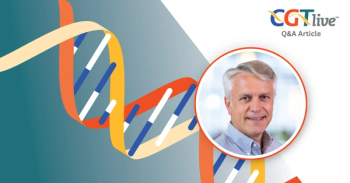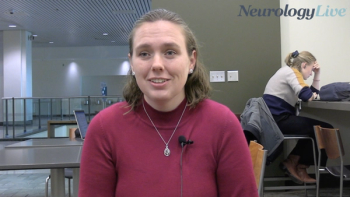
Data Roundup: October 2025 Features Updates from ESMO, ESGCT, and More
Catch up on any of the key data updates you may have missed last month, with coverage highlights from the CGTLive® team.
Last month, October 2025, the CGTLive® team was diligently tracking the latest data readouts and published literature on cell and gene therapies within oncology, neurology, rare diseases, and more.
As more and more innovative therapies enter the clinical trial field, more data is accrued every month, buoying excitement in the field and sometimes making or breaking the fates of small biotech companies. Last month delivered data updates from conferences like the
Click the read more buttons for more details and information about each update.
CARsgen’s CAR-T Satri-Cel Significantly Reduces CA19-9 Levels in Patients With Pancreatic Ductal Adenocarcinoma
October 23, 2025 - In a phase 1b clinical trial (CT041-ST-05, NCT05911217) for pancreatic ductal adenocarcinoma (PDAC), 5 of 6 patients (83.3%) treated with CARsgen’s Claudin18.2-directed chimeric antigen receptor T-cell (CAR-T) satricabtagene autoleucel (satri-cel) as an adjuvant therapy showed significant posttreatment decreases in carbohydrate antigen 19-9 (CA19-9). The data were presented in a poster at the ESMO Congress 2025, which took place October 17 to 21, in Berlin, Germany.
CARsgen pointed out that CA19-9 at elevated levels following surgical resection suggests a higher risk of tumor recurrence, along with an aggressive tumor biology, and a median interval of approximately 3 months has been observed from elevation of CA19-9 to radiological recurrence. All treated patients in the phase 1b trial had previously received curative-intent resection and following 3 months of adjuvant chemotherapy showed abnormal CA19-9, without indication of disease recurrence.
All patients had 4 weeks or more of follow-up after treatment with satri-cel (median follow-up, 6.05 months). It was noted that the CA19-9 reductions in the 5 patients observed after infusion of satri-cel ranged from 51.3% to 96.1%. Furthermore, disease recurrence was seen in only 1 of the 6 treated patients as of the latest follow-up. Carsgen stated that the median disease-free survival (DFS) and median overall survival were not reached and that an 83.3% DFS rate was observed at 9 months from surgery. The company highlighted a patient who reached 52 weeks of postinfusion follow-up without disease recurrence and is continuing to undergo follow-up.
AskBio’s Heart Failure Gene Therapy AB-1002 Shows Ability to Improve NYHA Class in Phase 1 Trial
October 22, 2025 - AskBio’s AB-1002, an investigational adeno-associated virus (AAV) vector-based gene therapy, has demonstrated the ability to improve New York Heart Association (NYHA) class in patients with NYHA class III nonischemic heart failure with reduced ejection fraction (HFrEF) who were treated in the phase 1 NAN-CS101 clinical trial (NCT04179643). The 12-month data from the trial were published in Nature Medicine.
According to the Nature Medicine paper, NAN-CS101 treated 6 patients with a dose of 3.25 × 1013 viral genomes of AB-1002 (cohort 1) and 5 patients with 1.08 × 1014 viral genomes of AB-1002 (cohort 2). The study population was composed of 9 men and 2 women. It was reported that 2 of 3 patients in cohort 1 with available data achieved NYHA class II as of 3 months posttreatment and 5 of 6 patients had achieved NYHA class I or II as of 6 months posttreatment, with these changes being maintained at 12 months posttreatment. For the 4 patients in cohort 2 who remained alive at 12 months posttreatment, 2 had achieved NYHA class II as of 3 months posttreatment and maintained this change at 12 months; the other 2 patients in the cohort showed no changes in NYHA class at any time point. In addition to the NYHA class improvements, the Nature Medicine paper notes that improvements in left ventricular ejection fraction were seen among patients in both cohorts and that in cohort 1 improvements in peak oxygen consumption and 6-min walk test performance were observed.
In terms of safety, there were no adverse events (AEs) or serious AEs deemed related to AB-1002 and most AEs that occurred were deemed mild or moderate with respect to severity. In some patients, primarily in cohort 2, self-limiting, mild, asymptomatic elevations in liver enzymes were reported. It was noted that 1 patient died while participating in the study, but the death was not deemed related to the treatment.
Sarepta Therapeutics’ Limb-Girdle Muscular Dystrophy Gene Therapy SRP-9003 Produces “Robust Expression” of β-SG in Phase 3 Trial
October 20, 2025 - Sarepta Therapeutics’ SRP-9003 (bidridistrogene xeboparvovec), an investigational adeno-associated virus (AAV) vector-based gene therapy intended to treat limb-girdle muscular dystrophy Type 2E (LGMD2E/R4, also known as beta sarcoglycanopathy), has demonstrated the ability to produce “robust expression” of β-sarcoglycan protein (β-SG) in the phase 3 EMERGENE clinical trial (NCT06246513). The data were presented in a poster at the 30th annual International Congress of the World Muscle Society (WMS), held October 7 to 11 in Vienna, Austria.
The trial treated 11 ambulatory patients in its first cohort and 6 nonambulatory patients in its second cohort. Notably, the primary end point of the study, which was defined as the mean [SD] change from baseline (CFBL) to day 60 for ambulatory patients in β-SG expression, as measured by percent positive fibers using immunofluorescence staining (PPF), was met, with a mean 43.4% [29.9%] CFBL observed (P < .001). As for the nonambulatorycohort, which was analyzed as a secondary end point, a mean 23.9% [14.2%] (P < .02) CFBL was observed by PPF. Additional secondary and exploratory end points looked at the CFBL to day 60 as measured by percent fluorescent intensity (PFI) and Western blot. For ambulatory patients, a mean 18.23% [11.23%] CFBL was observed by PFI (P < .001) and a mean 33.58% [31.28%] CFBL was observed by Western blot (P < .01). For nonambulatory patients, a mean 21.81% [14.04%] CFBL was observed by PFI and a mean 12.99% [10.56%] CFBL was observed by Western blot.
The study also observed colocalization of the β-SG and δ-SG subunits, as assessed by PPF of biopsied muscle tissue, and found that the PPF for both β and δ increased in both the ambulatory and nonambulatory cohorts at day 60. Furthermore, the mean (SD; min, max) percent CFBL to day 60 for serum creatine kinase was −88.8% (10.9%; −99.6% to −66.8%) in the ambulatory cohort and −92.4% (4.5%; −97.1% to −86.7%) in the nonambulatory cohort.
Patients Treated With Spur Therapeutics’ Gaucher Disease Gene Therapy FLT201 Maintain Clinical Benefit for Up to 2 Years
October 16, 2025 - Newly updated data from Spur Therapeutics’ phase 1/2 GALILEO-1 clinical trial (NCT05324943), which is evaluating the adeno-associated virus (AAV) vector-based gene therapy avigbagene parvec (also known as FLT201) for the treatment of Gaucher disease, has shown that patients who received the gene therapy have maintained clinical benefit for up to 2 years post treatment. The data were presented at the ESGCT 32nd Annual Congress, held October 7 to 10, in Seville, Spain.
The efficacy data presented included 4 patients who had discontinued their standard-of-care (SOC) therapy, which was either enzyme replacement therapy or substrate reduction therapy, in a time frame of 4 to 11 weeks after being treated with FLT201. The follow-up time for these patients ranged from 19 to 23 months, and as of the latest follow-up, all patients remained off their prior SOC therapy and showed improvement or maintenance of outcomes. Levels of dried blood spot (DBS) glucosylsphingosine (lyso-Gb1), which is in Gaucher disease a validated marker of treatment response according to Spur, were maintained or reduced from baseline measurements ranging from 10.3 to 486.4 ng/mL (mean, 167.9 ng/mL) to month 21 measurements ranging from 12.5 to 46.8 ng/mL (mean, 26.0 ng/mL). It was noted that this constituted an 84.5% reduction and that similar findings were seen with regard to plasma lyso-Gb1.
It was also reported that hemoglobin or platelet levels either remained in the normal range or improved in the 4 patients. Although 1 patient showed a transient drop in hemoglobin deemed related to a newly diagnosed iron deficiency, this patient’s hemoglobin levels were brought back to normal after starting use of iron supplements. Furthermore, the patients were noted to have maintained stability of liver and spleen volumes.
Regeneron’s Gene Therapy DB-OTO Improves Speech Perception in Children With Otoferlin-Related Hearing Loss
October 13, 2025 - Regeneron’s DB-OTO, an investigational adeno-associated virus (AAV) dual-vector-based gene therapy intended to treat otoferlin (OTOF)-related hearing loss, has improved hearing and speech perception in pediatric patients treated in the phase 1/2 CHORD clinical trial (NCT05788536), according to updated data reported by the company at the annual American Academy of Otolaryngology-Head and Neck Surgery (AAO-HNSF) meeting, held October 11 to 14 in Indianapolis, Indiana, and simultaneously published in the New England Journal of Medicine (NEJM).
Among 12 patients treated in the pivotal CHORD study, 11 patients (14 of 15 treated ears) displayed clinically meaningful improvements in hearing, with 3 of the patients showing normal hearing levels. As such, the study met its primary end point, which was set at 9 patients showing improvements in hearing at a threshold of 70 decibels hearing level or less (dBHL), as evaluated at 24 weeks posttreatment by behavioral pure tone audiometry. Regeneron noted that the patients responded within weeks of receiving the gene therapy.
Furthermore, 6 of the treated patients showed the ability to hear soft speech without device assistance and 3 achieved the ability to detect whispers. Regeneron also pointed out that 1 patient who did not meet the criteria for the primary end point later showed improvement to “nearly normal” hearing sensitivity at 48 weeks posttreatment. In addition, the company stated that an auditory brainstem response at 90 dB or less, which constituted a key secondary end point for the study, was seen in 9 patients.
Newsletter
Stay at the forefront of cutting-edge science with CGT—your direct line to expert insights, breakthrough data, and real-time coverage of the latest advancements in cell and gene therapy.




































